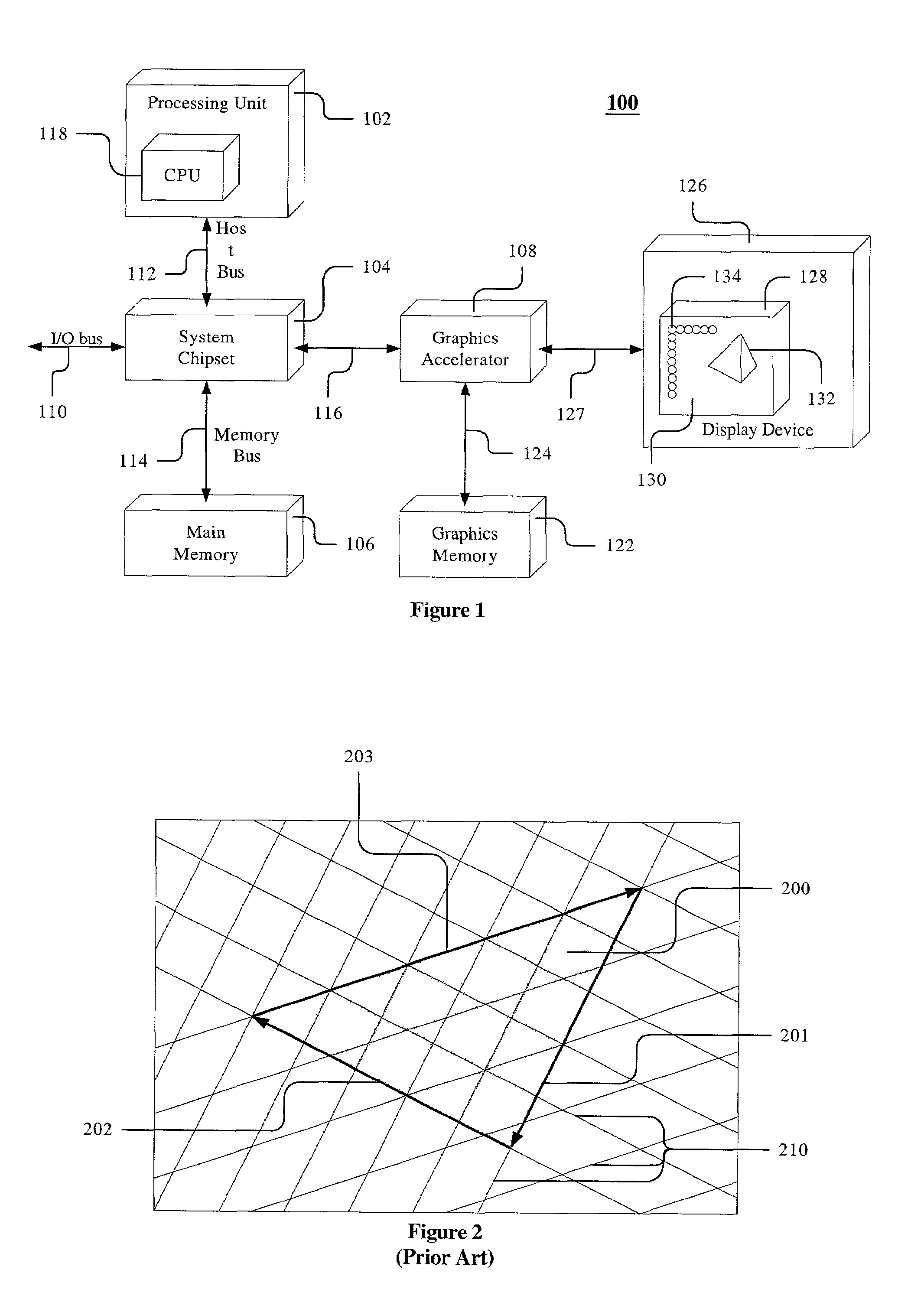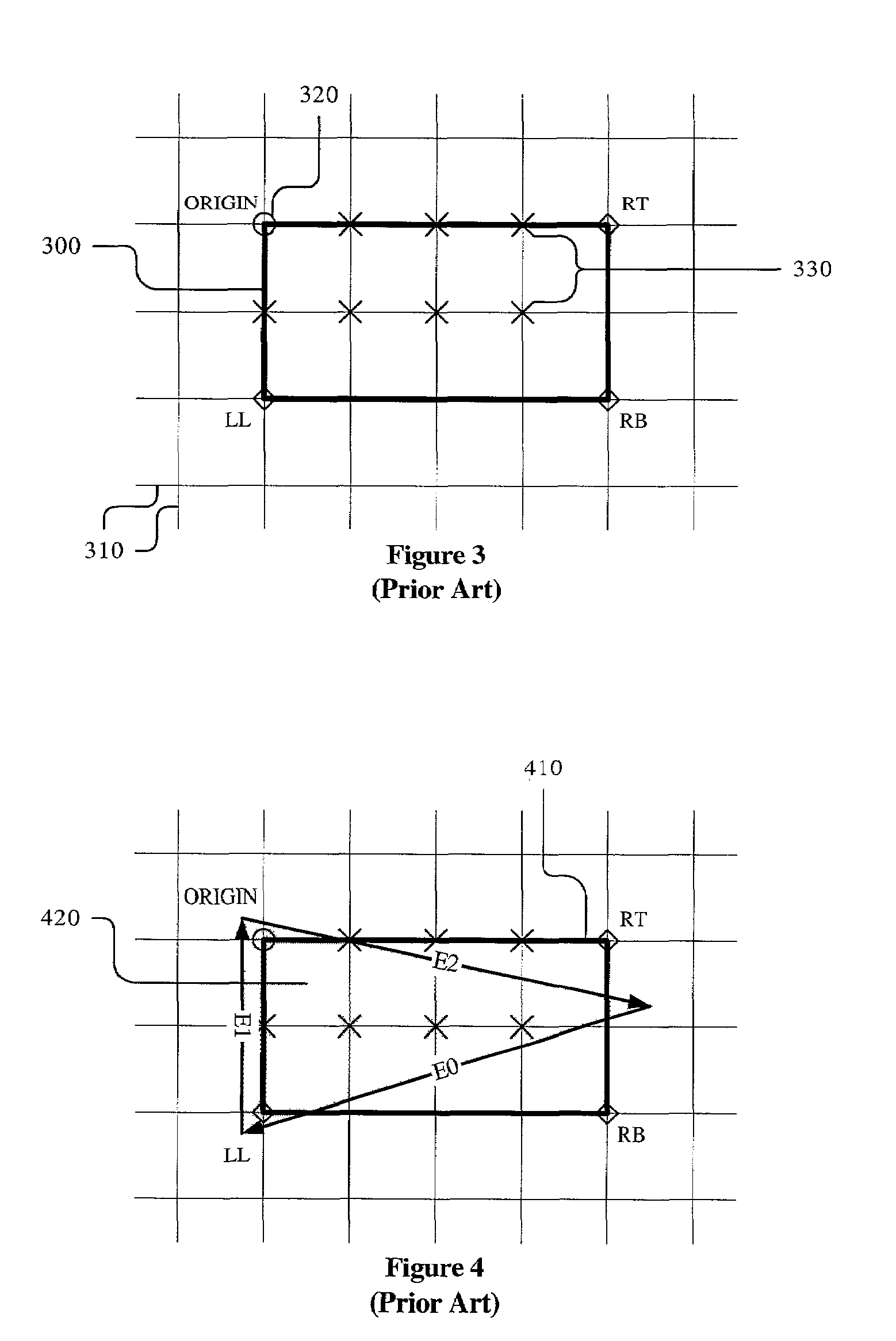Efficient movement of fragment stamp
a fragment stamp and efficient technology, applied in the field of graphics accelerators, can solve the problems of increasing the number of cycles of stamp traversing algorithms, increasing insufficient detail of the algorithm description of pineda, so as to reduce the number of stamp visits, less efficient, and more overall time
- Summary
- Abstract
- Description
- Claims
- Application Information
AI Technical Summary
Benefits of technology
Problems solved by technology
Method used
Image
Examples
Embodiment Construction
System Overview
[0068]FIG. 1 shows a computer system 100 embodying the principles of the invention. The system 100 can generate monochrome or multicolor 2-D and 3-D graphic images for rendering on a display device. In the computer system 100, a system chip set 104 provides an interface among a processing unit 102, a main memory 106, a graphics accelerator 108, and devices (not shown) on an I / O bus 110. The processing unit 102 is coupled to the system chip set 104 by the host bus 112 and includes a central processing unit (CPU) 118. The main memory 106 interfaces to the system chip set 104 by bus 114.
[0069]The graphics accelerator 108 is coupled to the system chip set 104 by a bus 116, to a graphics memory 122 by a bus 124, and to a display device 126 by a bus 127. The display device 126 includes a raster display monitor 128 for rendering color images on, for example, a display surface or screen 130. The invention can also be practiced with a monochrome monitor that displays gray-scal...
PUM
 Login to View More
Login to View More Abstract
Description
Claims
Application Information
 Login to View More
Login to View More - R&D
- Intellectual Property
- Life Sciences
- Materials
- Tech Scout
- Unparalleled Data Quality
- Higher Quality Content
- 60% Fewer Hallucinations
Browse by: Latest US Patents, China's latest patents, Technical Efficacy Thesaurus, Application Domain, Technology Topic, Popular Technical Reports.
© 2025 PatSnap. All rights reserved.Legal|Privacy policy|Modern Slavery Act Transparency Statement|Sitemap|About US| Contact US: help@patsnap.com



